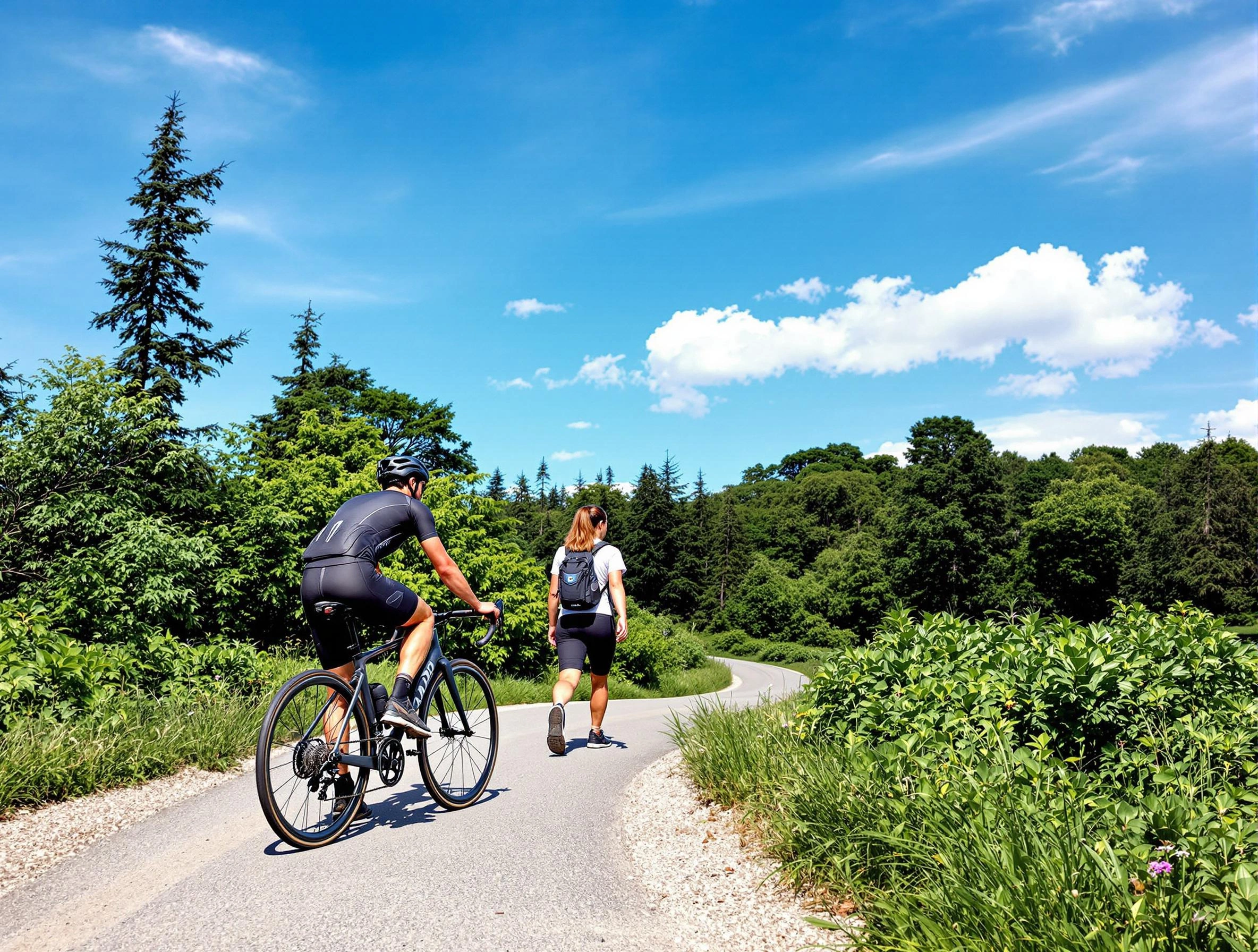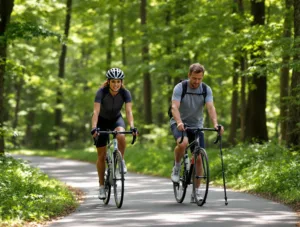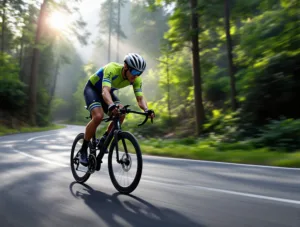The Best Time to Cycle for Faster Fat Burning: Morning vs. Evening Workouts
Introduction
Cycling is one of the most effective forms of exercise for fat burning, cardiovascular health, and overall fitness. However, the timing of your cycling sessions can significantly impact your results. Should you ride in the morning to kickstart your metabolism, or is an evening workout better for performance and fat loss? This article explores the science behind fat burning, the physiological differences between morning and evening cycling, and practical recommendations to maximize your results.
Whether you’re a casual rider or a competitive cyclist, understanding the optimal time to train can help you achieve faster fat loss, improved endurance, and better overall health. We’ll analyze the benefits of both morning and evening cycling, examine scientific studies, and provide actionable advice to help you decide the best time to ride for your fitness goals.
The Science of Fat Burning and Cycling
How the Body Burns Fat During Exercise
Fat burning occurs when the body uses stored fat as a primary energy source. This process is influenced by several factors, including:
- Exercise intensity – Low to moderate-intensity cycling (60-70% of max heart rate) primarily burns fat, while high-intensity intervals (HIIT) increase calorie expenditure post-workout.
- Duration – Longer rides (45+ minutes) deplete glycogen stores, forcing the body to rely more on fat.
- Metabolic state – Fasted morning cycling may enhance fat oxidation compared to fed-state workouts.
Hormonal Influences on Fat Loss
Key hormones affecting fat metabolism include:
- Cortisol – Higher in the morning, which may promote fat breakdown but can also lead to muscle catabolism if excessive.
- Insulin – Lower in the morning, improving fat utilization.
- Testosterone & Growth Hormone – Higher in the evening, aiding muscle recovery and fat metabolism.
Understanding these factors helps determine whether morning or evening cycling is more effective for fat loss.
Benefits of Morning Cycling for Fat Loss
1. Enhanced Fat Oxidation in a Fasted State
Cycling before breakfast (fasted cardio) forces the body to rely on fat stores rather than recently consumed carbohydrates. Studies suggest that fasted exercise can increase fat oxidation by up to 20% compared to fed-state workouts.
Practical Tip:
- Keep the ride at a moderate intensity (Zone 2 heart rate) to maximize fat burn without excessive muscle breakdown.
- Hydrate well and consider black coffee (no sugar) to boost alertness and fat mobilization.
2. Boosts Metabolism for the Entire Day
Morning exercise elevates your metabolic rate through Excess Post-Exercise Oxygen Consumption (EPOC), meaning you burn more calories throughout the day.
3. Establishes Consistency & Mental Clarity
Starting your day with cycling enhances discipline, reduces stress, and improves focus—key factors in long-term fat loss success.
Potential Downsides:
- Lower glycogen stores may reduce high-intensity performance.
- Higher cortisol levels could lead to muscle loss if overdone.
Benefits of Evening Cycling for Fat Loss
1. Higher Performance & Intensity
Studies show that muscle strength, endurance, and power output peak in the late afternoon due to:
- Elevated body temperature (improving muscle efficiency).
- Higher testosterone and growth hormone levels (enhancing recovery).
Practical Tip:
- Use evening sessions for high-intensity interval training (HIIT) or long endurance rides.
- Post-workout protein intake aids muscle recovery and overnight fat metabolism.
2. Stress Relief & Better Sleep (If Timed Right)
Evening cycling can reduce cortisol levels accumulated during the day, promoting relaxation. However, intense workouts too close to bedtime may disrupt sleep.
Ideal Timing:
- Finish cycling at least 2-3 hours before sleep to allow cortisol levels to stabilize.
3. More Time for Fueling & Recovery
Unlike fasted morning rides, evening cyclists can properly fuel before and after workouts, optimizing performance and muscle retention.
Potential Downsides:
- Busy schedules may lead to skipped workouts.
- Digestion of late meals could affect performance.
Morning vs. Evening Cycling: Which is Better for Fat Loss?
| Factor | Morning Cycling | Evening Cycling |
|---|---|---|
| Fat Oxidation | Higher (fasted state) | Lower (fed state) |
| Performance | Lower (low glycogen) | Higher (peak strength) |
| Metabolic Boost | Longer EPOC effect | Moderate EPOC |
| Consistency | Easier to maintain | Prone to schedule conflicts |
| Hormonal State | High cortisol, low insulin | Higher testosterone & growth hormone |
Key Takeaways:
- For pure fat loss: Morning fasted cycling may be slightly more effective.
- For performance & muscle retention: Evening workouts yield better results.
- For consistency: Choose the time that fits your lifestyle best.
Optimizing Cycling for Maximum Fat Loss
1. Combine Both Morning & Evening Rides
- Morning: Steady-state fat-burning rides (60-90 mins, Zone 2).
- Evening: HIIT or strength-endurance sessions.
2. Adjust Nutrition Accordingly
- Morning Rides: Hydrate + caffeine; post-ride protein + healthy fats.
- Evening Rides: Pre-ride carbs for energy; post-ride protein for recovery.
3. Track Progress & Adjust
Use a heart rate monitor or fitness tracker to measure fat burn vs. performance improvements.
Final Verdict: Best Time to Cycle for Fat Loss
The best time to cycle depends on your goals:
- For fastest fat loss: Morning fasted cycling (moderate intensity).
- For performance & muscle gain: Evening high-intensity sessions.
- For sustainability: Stick to the time that keeps you consistent.
Ultimately, the best workout is the one you can do consistently. Whether you choose morning or evening cycling, the key is to stay active, fuel properly, and enjoy the ride!
Would you like additional details on nutrition plans or sample cycling routines? Let me know how I can refine this further!









Add comment